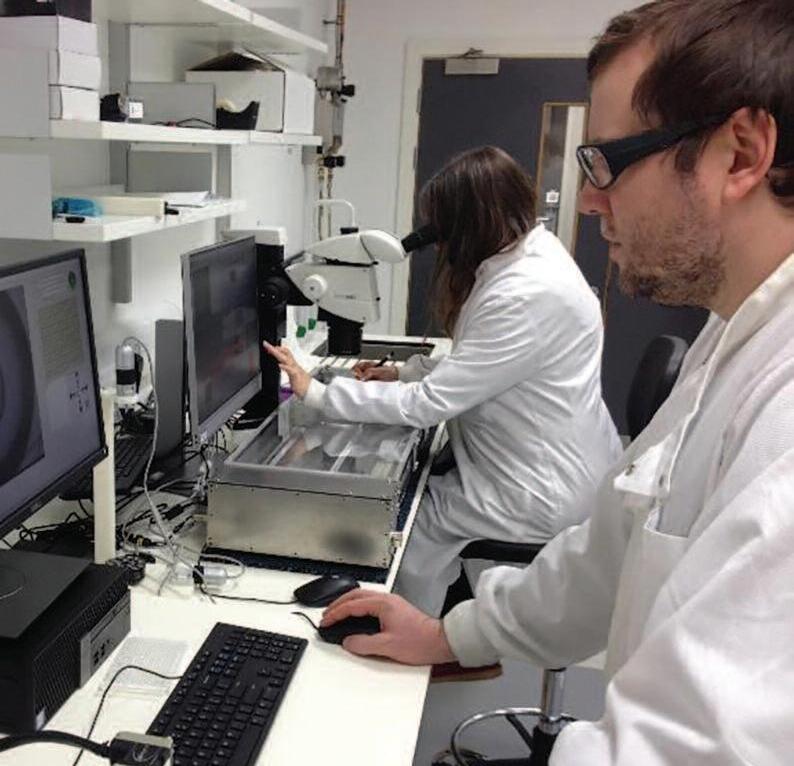
2 minute read
Enhancing target-based screening High throughput protein production and X-ray crystallography
A target-based approach to drug discovery requires the ability to gain structural information by ‘visualising’ fragments and compounds bound to the target of interest
A high throughput methodology to produce the structural data allows this information to be gathered in just a few hours The WCAIR Molecular Interactions Team have worked with scientists at the Diamond Light Source, Harwell to adapt their XChem technology to the needs of the WCAIR screening programmes and establish it in Dundee
Advertisement
The drivers for XChem are to work on a very small scale, carry out as many tasks as possible in parallel, use computers to automatically do all the note-taking, and use robotics to do most (but not quite all) of the intricate work Crystals are grown in droplets of liquid of just a few hundred nanolitres, into which a specialist acoustic dispenser then deposits a few nanolitres of the chemical fragment being tested They are then left for a several hours to allow the fragment to soak into the crystal If, and only if, the fragment binds specifically to a site on the protein will we be able to see it in the final structures via X-ray crystallography
Getting crystals ready for an X-ray diffraction experiment is the one part of the procedure that robotics cannot perform, and we have to rely on the skills of our protein crystallographers to do this. However, we have in place the ‘shifter’, a piece of equipment that makes this easier and significantly faster than standard manual harvesting. Various software tools are then used to process the diffraction data collected, easing some of the load on the crystallographers as they search through the numerous datasets for the successful fragments Decoding the X-ray patterns to show the fragment bound to the target requires the specialist knowledge of the WCAIR team of computational chemists
XChem relies on being able to make and crystallise the target protein in a form that replicates the natural shape of the protein in the cell. In parallel with setting up the XChem screen, WCAIR has developed high throughput protein production methods. The methods and technologies under development allow us to test different ways of making the protein in parallel with the aim of finding a suitable construct as efficiently as possible. The best method is then scaled up to produce enough protein for the XChem screen and potentially other biophysical screening methods
The high throughput protein production methods implemented have been crucial in a number of DDU projects allowing production of the target protein when conventional methods had failed.
For example, by producing 12 chimeric proteins for a malaria target the team went from gene to high resolution crystal structure in 9 weeks, after previous failures by another group to produce a protein which would crystalise It also allows rapid and easy manipulation of a target protein to explore crucial residues in the binding site of the compound and explore potential resistance. This has been applied to study the trypanosome proteasome as a drug target for visceral leishmaniasis and Chagas disease
The results of XChem are just the starting point The structures guide the chemists, both computational and medicinal, in how to build up the fragments into larger molecules with more interactions with the target protein The detailed molecular interactions data generated by crystallography and other biophysical techniques empower the computational chemists to design more efficient drugs and new machine learning based software tools to improve their modelling. Combined with the direct to biology high throughput chemistry approaches (described in previous section) the drug discovery project team are able to move around the design-make-test cycle more rapidly and efficiently as they progress from hits to leads to candidate drugs.










